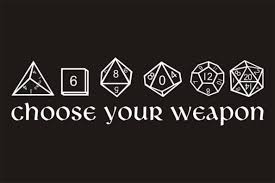There are, according to Harvard psychologist Jerome Bruner, two ways of processing ideas and understanding them, of ordering experience and constructing reality. One is based on logic, verifiable fact or empirical proof. The other is based on how it feels and resonates. Or, as literary critic and philosopher Walter Benjamin put it:
Only the storyteller can transmute information — be it in the form of “objective” fact or “subjective” experience — into wisdom. ~ How the Novel & the News Killed Storytelling
Knowing vs Believing
There’s a fundamental difference between knowing something, and believing it. One is rational, one is emotional. To get personal for a second, it’s a major disconnect that I struggle with when dealing with depression. I know I can put words on paper in a way people enjoy – there’s empirical proof in the feedback from readers, in the fact my short stories are getting published, in the number of Twitterature followers I have. But I don’t always believe it.
I know 2+2 = 4. That’s information which engages my brain but absolutely no emotion. (I’m just not that into maths. If algebra does it for you, who am I to judge?)
I believe sunsets are beautiful. There’s no empirical evidence to support this statement, but watching a good sunset fills me with happiness. The response comes from my heart, not my head.
We live in the Age of Information. There’s more data available than ever before, more stats and numbers and analysis. It’s easy to forget people can use that information to tell stories, to makes us accept things emotionally by presenting them empirically. And belief is much stronger than knowledge.

History According To Hollywood
There are a number of films which my friends can’t watch. Dr. Nick, naval architect, frowns at U-571; Andrew Knighton, historian, shouts at Braveheart; I, classicist, throw things at Troy. A lot of people have a film, or a book, which enrages them because it’s inaccurate. But for those who aren’t experts in that particular field, it’s their source of information. And because it’s told as a story, engaging them emotionally rather than cerebrally, they believe it.
You need people to believe your stories. Emotional engagement is how you keep them reading to the end. But by tapping into their emotions, you’re also teaching them, however inadvertently. If you’ve done your job as a writer, they will walk away believing in your world, in your characters, in their moral struggles and social acceptances.
That means we have a responsibility to know what it is our stories are teaching people, and to ensure it’s something we want to teach. To turn cognitive thoughts into emotional wisdom, via words on the page. So how do we do this?
In contrast to our vast knowledge of how science and logical reasoning proceed, we know precious little in any formal sense about how to make good stories. ~ Jerome Bruner, The Psychology of What Makes a Great Story
Thanks, Jer. Real helpful.




